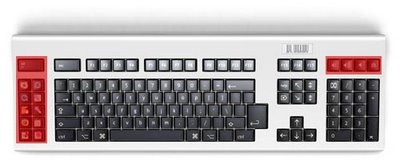The HDMI Standard

The HDMI (High-Definition Multimedia Interface) is a standard for digital (vs. analogical) transmission of audio and video signals defined by a consortium gathering Hitachi, Matsushita, Philips, Silicon Image, Sony, Thomson and Toshiba. This standard also has the role to generalize, if not to impose, the DRM technology known as 'HDCP' (High-Bandwidth Digital Content Protection).
HDMI should eventually replace the classic Peritel SCART connector on all display units (e.g., DVD readers, satellite decoders, etc.). The most recent version of the standard is HDMI 1.3, which has been implemented in Sony's Playstation 3.

